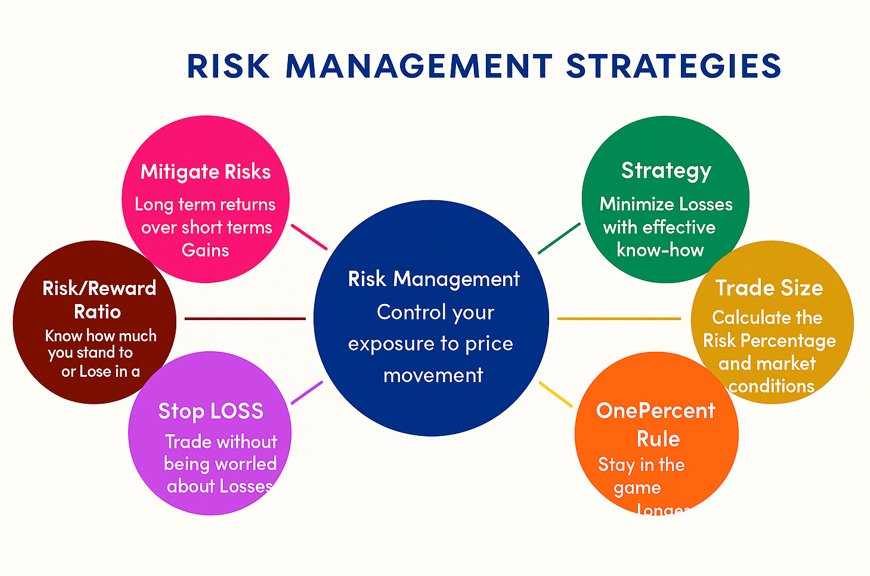Introduction: What Is a Prop Firm Challenge?
Are you looking to scale your trading career with access to serious capital? A prop firm challenge is your gateway. These evaluations are used by proprietary trading firms to test whether you’re disciplined, consistent, and ready to manage larger accounts. Passing isn’t just about profits—it’s about mindset and structure.
This guide walks you through how to prepare for and pass a prop firm challenge in 2025, with insights tailored to Apex Trader Funding and similar futures-based firms.
What Is a Prop Firm Challenge?
A prop firm challenge is a test set by proprietary trading firms to assess your risk management, consistency, and strategy. Traders who pass receive access to the firm’s capital and a share of the profits. These challenges come with structured rules: profit targets, drawdown limits, daily performance minimums, and sometimes news-event restrictions.
The purpose isn’t just to find profitable traders—it’s to find consistent and rule-abiding traders.
What Makes Prop Firm Challenges So Demanding?
Proprietary trading firms only fund individuals who demonstrate the ability to control risk and trade consistently. Even a single day of over-leveraging or breaking a rule can lead to disqualification or reset.
Take Apex Trader Funding as a case study:
- Profit Targets: Range from $1,500 (on a $25k account) to $20,000 (on a $300k account)
- Trailing Drawdown: Follows your equity peak until you stop trading
- Consistency Rules: Must trade at least 7 calendar days and have 5 profitable days
- Trading Platforms: Most users trade using R|Trader or Tradovate simulators, which mirror live execution conditions
Step 1: Prepare for the Challenge
Learn the Rulebook Inside and Out
Every prop firm has unique evaluation criteria. Ignoring even one rule can invalidate your progress.
Key rules to review:
- Daily loss limits (e.g., 5–10% of account drawdown)
- No-trade windows (such as during major news releases)
- Trade holding limits or time restrictions
- Maximum allowable lot size per instrument
- Payout requirements after funding
Understanding concepts like Trailing Drawdown or 5:1 risk-to-reward caps is essential.
Build a Structured Trading Plan
A solid plan should include:
- Focus on one or two futures instruments (MES, MNQ, or ES)
- Predefined entry/exit rules supported by historical backtests
- Risk per trade fixed at 1–2% of the evaluation account size
- Scheduled trading hours (e.g., NY session only)
Simulate with Precision
Use a demo account that mimics the actual prop firm platform. Simulate the challenge for at least 10 days while applying the full rulebook.
Treat it as a live exam—don’t cherry-pick trades or ignore losing sessions. Record results in a trade journal for review.
Step 2: Execute With Precision During the Challenge
Prioritize Risk Over Reward
Prop firm evaluations reward stability, not explosive returns. Smaller daily gains will carry you further than one lucky trade.
Example:
On a $50,000 Apex account with a $2,500 trailing drawdown, a daily risk of $250 (10%) helps you stay in the game longer. Avoid “all-in” trades that jeopardize your cushion.
Lock in Wins Strategically
Once your profit target is hit, the trailing drawdown stops moving. That’s your cue to:
- Reduce trade size
- Avoid unnecessary trades
- Tighten stops or go flat to protect equity
If you’re $100 over the profit target, protect that threshold.
Control Emotions with Structure
Passing a prop firm challenge demands emotional control. Include the following habits:
- Take scheduled breaks after each trading session
- Step away after big wins or losses to avoid impulsive behavior
- Use breathing exercises or mindfulness to reduce stress
- Log every trade and your emotional state before and after entry
Step 3: Avoid These Common Mistakes
Even skilled traders can fail a prop firm challenge by making these avoidable errors:
- Overleveraging: Avoid using maximum contract size just to reach the target faster
- Skipping Stop Losses: Letting losses run often breaches drawdown limits
- Chasing Home Runs: It’s safer to accumulate smaller profits over several days
- Gaming the Rules: Holding past permitted hours or using “tick scalping” tricks may get you flagged
- Ignoring Platform Nuances: Some platforms like Rithmic and Tradovate may delay or slip orders—understand their behavior in a demo
Step 4: What to Do After You Pass
Passing the challenge is only the beginning. Once funded:
- Reduce risk during your first two weeks to maintain status
- Withdraw partial profits if allowed to solidify gains
- Slowly scale up position sizes as confidence builds
- Continue to follow the firm’s rules—violations can still get you disqualified
Consider joining communities or platforms that offer trading reviews, trade copying, or automation. Just because you passed once doesn’t mean you should trade without structure moving forward.
Next Steps: Automate and Scale
If you’re serious about trading full-time, automation can help you maintain discipline even under pressure. Automated setups can enforce stop-losses, avoid late entries, and lock in partial profits—all without emotion.

Conclusion
Passing a prop firm challenge in 2025 takes more than market knowledge. It takes structure, emotional discipline, and respect for the rules.
Think of the challenge as a job interview. The evaluator doesn’t care how much you could make—they care how well you manage risk and follow their process.
Prepare smart, trade small, stay consistent—and your path to a funded account will be wide open.
Next Steps: Automate and Scale
If you’re serious about trading for a living, automation can help maintain discipline.
Related Reading:
Automated Prop Firm Trading with Tradovate (2025 Guide)
Top Futures Prop Firms in 2025 with Automation Options
Proprietary Trading Explained: How to Automate and Scale





“I appreciate the knowledge shared here. It aligns with some of my own findings, which I’ve compiled on my website.”
fantastic put up, very informative. I ponder why the opposite experts of this sector don’t notice this.
You should proceed your writing. I’m confident, you’ve a great readers’ base already!
casino en ligne
I visited multiple web pages however the audio quality for audio songs existing at this
site is genuinely fabulous.
casino en ligne
Everything is very open with a precise explanation of the challenges.
It was truly informative. Your website is extremely helpful.
Thank you for sharing!
casino en ligne
This post is worth everyone’s attention. When can I find
out more?
casino en ligne
Great blog here! Additionally your site loads up fast!
What web host are you using? Can I get your associate
link in your host? I desire my web site loaded up as fast as yours lol
casino en ligne
Excellent post. I definitely appreciate this site.
Thanks!
casino en ligne
I am genuinely glad to glance at this webpage posts which includes
lots of valuable facts, thanks for providing these kinds
of statistics.
casino en ligne
I’m really impressed with your writing skills and also with the layout on your weblog.
Is this a paid theme or did you customize it yourself? Anyway keep up the excellent quality writing,
it is rare to see a great blog like this one these days.
casino en ligne
Heya just wanted to give you a quick heads up and let you know a few of
the pictures aren’t loading correctly. I’m not sure why but I think
its a linking issue. I’ve tried it in two different web browsers
and both show the same outcome.
casino en ligne
Hi there, everything is going nicely here and ofcourse every one is sharing facts,
that’s in fact excellent, keep up writing.
casino en ligne